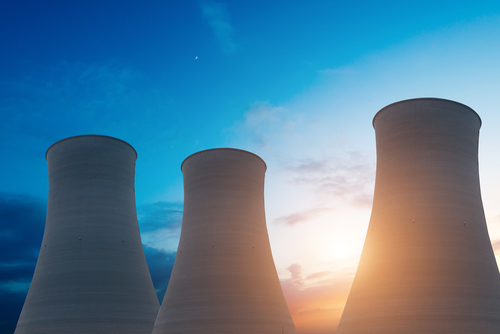Nuclear is safe, perception is the problem – PNRI
- September 18, 2019
- 0

es’s energy mix as it is a safe choice in contrast with the public’s perception.
This was what Philippine Nuclear Research Institute (PNRI) Director Carlo Arcilla said during the panel discussion in this year’s Powertrends on September 3 and 4.
Arcilla noted that nuclear power supplies around 20 percent of the world’s power needs, emitting zero emissions. It is also considered as the most regulated industry in the world.
“From the emissions side, it is better than coal. The big question in nuclear is where do you put the waste?” Arcilla said.
Skeptics of nuclear energy technology points to issues surrounding nuclear power such as the Chernobyl and Fukushima accidents, fuel sourcing, the pending decision on the Bataan Nuclear Power Plant (BNPP), as well as the waste disposal management.
According to EcoWaste’s clean air and renewable energy advocate Rene Pineda, reviving the BNPP might not be a good idea. He said that it is better not to create a “highly toxic problem that our country cannot handle.”
“How do BNPP pushers intend to manage, store and dispose of the tons of highly toxic waste that will be generated when we cannot even effectively deal with our ordinary household discards?” he was quoted as saying.
However, Arcilla believed that the main problem with nuclear power is public perception.
“The big problem with nuclear is perception because when you mention nuclear people start thinking ‘bomb.’ If it is unsafe, why does America have 100 nuclear power plants and will continue having them?” Arcilla said.
He noted that if the government decides to push through with the utilization of nuclear power as an energy source, waste disposal should be a priority.
According to a coursework study, there are methods to properly dispose nuclear waste such as reprocessing, transmutation, space disposal, and geological disposal.
Reprocessing is a method that includes taking the waste away from the material and separating the useful component. Transmutation is the process of converting a chemical element into another less harmful one.
Space disposal focuses on putting nuclear waste on a space shuttle and launching it into space. However, this might not be a viable option as it poses a problem in terms of practicality.
Arcilla suggested geological disposal as it is the most practiced waste disposal method. It involves burying the radioactive waste deep inside multiple barriers to provide protection.
“You select an isolated island. Then, put the waste there and you put a material called Bentonite,” he said.
“There is a solution. It is important to discuss this issue upfront,” he added.
Aside from waste disposal, sourcing nuclear power’s fuel, which is uranium, is also one of the problems surrounding the installation of a nuclear plant in the Philippines.
Uranium is a metallic element that occurs naturally. It is 500 times more abundant than gold, 25 times more abundant than mercury and about as common as tin.
He added that sourcing for uranium shouldn’t be a problem, as importing the material is easier than coal.
“For Uranium you have, Kazakhstan, Australia, Canada, and the US. The IEA actually put up a fuel repository in Kazakhstan to make sure that it will not be cartelized,” Arcilla explained.
The revival of the Bataan Nuclear Power Plant remains an issue as there are issues surrounding the reliability of the plant and other geological issues.
However, Arcilla debunked the myths surrounding BNPP such as the plant being on a fault line.
“You can say many things about the BNPP but number one it is not built on a fault, and I say that as a geologist. Not all geologists will agree. I did my own studies. I have my data and a list of people who don’t believe in it because I can’t believe that the country will spend $2 billion and not check if it’s on a fault or not,” Arcilla said.
As for the impending status of BNPP, National Power Corporation Management Committee Atty. Manuel Luis Plofin said that, “It’s always affected by some external
event. At the time that a decision was being made to operate or not to operate, Chernobyl happened.”
Earlier, the Department of Energy Secretary Alfonso Cusi has openly said that the Philippines is “openly considering” to use nuclear power to achieve its energy security goals.
“It is high time we put the framework in place to bring nuclear power into the energy mix. We should learn the lessons from the past and catch up with the missed opportunities,” Cusi was quoted on the International Atomic Energy Agency (IAEA) website
Still, many argued that the Philippines still lack of well-defined policies regarding import and export controls, emergency preparedness and response.
Chairman of Senate Committee on Energy Senator Sherwin Gatchalian agreed that there is still a lot to learn from more advanced countries about nuclear power development.
“All of the gaps in our nuclear energy legal framework would first need to be addressed by passing comprehensive legislation,” Gatchalian said.
Currently, the country has a sole nuclear regulatory body which is the PNRI under the Department of Science and Technology (DOST). PNRI’s responsibilities focus on radiation and nuclear research and development.